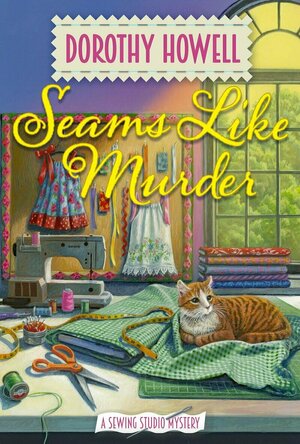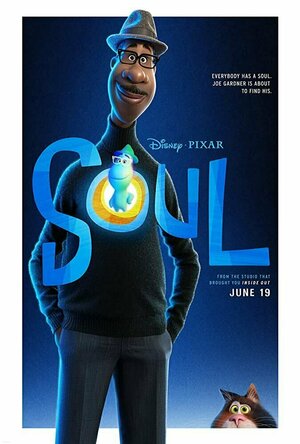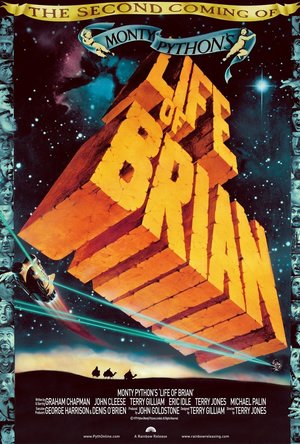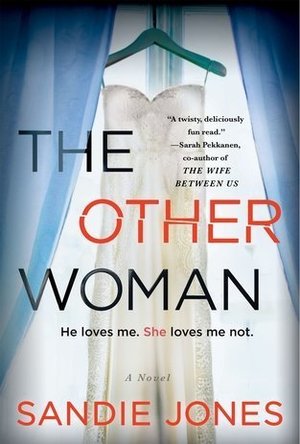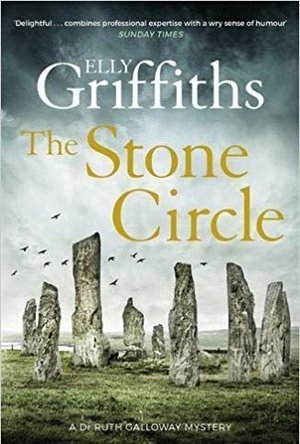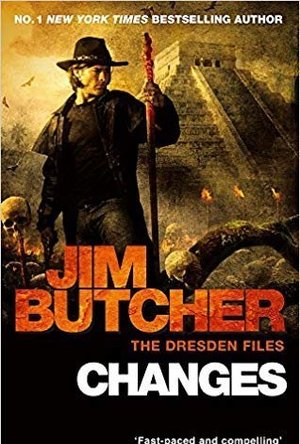Search
Search results
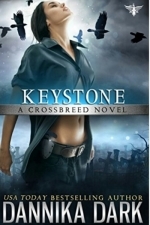
Keystone (Crossbreed #1)
Book
"Raven Black hunts evildoers for fun, but her vigilante justice isn't the only reason she's hiding...
Urban fantasy Dannika Dark crossbreed keystone
Mark @ Carstairs Considers (2444 KP) rated Seams Like Murder in Books
Oct 4, 2022 (Updated Oct 4, 2022)
Can Abbey Sew Up a Murder?
When her life in Los Angeles falls apart, Abbey Chandler heads up the California coast to the town of Hideaway Grove where she spent many happy summers as a child visiting her aunt. Abbey’s hardly arrived before she catches a glimpse of a hit and run behind her aunt’s bakery. Now, instead of trying to figure out what to do with her life, Abbey is trying to figure out who killed the town’s new librarian. Everyone seemed to love the victim. Who wanted her dead?
This book gets out to a quick start, but then the pacing becomes uneven. There is lots of set up for future books in the series here. I enjoyed seeing Abbey reconnect with old friends and making new ones as well as discovering a love of sewing, but it did slow things down. Don’t misunderstand, there is a good mystery here, and I like how things came together at the end. I also really liked most of the characters, although the sheriff was shockingly clueless. There are many scenes in the aunt’s bakery that will have you drooling, but this is a crafting cozy series, so our extra is a guide to creating pillowcase dresses. If you are looking for a promising new series, this is one to check out.
This book gets out to a quick start, but then the pacing becomes uneven. There is lots of set up for future books in the series here. I enjoyed seeing Abbey reconnect with old friends and making new ones as well as discovering a love of sewing, but it did slow things down. Don’t misunderstand, there is a good mystery here, and I like how things came together at the end. I also really liked most of the characters, although the sheriff was shockingly clueless. There are many scenes in the aunt’s bakery that will have you drooling, but this is a crafting cozy series, so our extra is a guide to creating pillowcase dresses. If you are looking for a promising new series, this is one to check out.

Bose SoundTouch 10
Tech
The SoundTouch 10 wireless speaker makes it easy to stream the music you love. It fits just about...
Works With Alexa
Bong Mines Entertainment (15 KP) rated The Art of Letting Go by Mauwe in Music
Jun 7, 2019
Mauwe (Portia & Jay) is a Bristol-based indie-pop duo. Not too long ago, they released their debut EP, entitled, “The Art of Letting Go”.
The 5-track project is a chronicle of love lessons that Mauwe learned in life. Also, hopefulness is the common theme throughout the EP.
“That’s All”
That’s All wishes an old flame the best. Nothing more nothing less. The song is sung from a female’s point of view, where the woman in question is thinking about her ex-boyfriend.
She knows their relationship is over. Plus, she’s dealing with the fact that he has moved on with another woman. But that doesn’t stop her from telling him that she’s thinking about him.
“Smoked a Pack”
Smoke a Pack is an edgy song about a woman that’s waiting for a phone call from a man she regrets being in a relationship with. While waiting, she realizes she should have never gotten into a relationship with him in the first place.
The woman is thinking about her friends warning her not to get into the relationship and other regretful actions. The situation is nerve-racking so she smokes a pack of cigarettes. She’s trying to release her stress and anger the cheapest way she knows how.
“Gold”
Gold is an apprehensive song about falling for someone new. The song places a woman that’s drunk in love with a man that makes her feel like gold.
The woman compares her current state of drunken love to someone who is on drink number three. Depending on what that person is drinking, probably means she’s feeling good inside.
“Walls”
Walls is an emotional R&B/Soul ballad. It’s about a woman who’s losing her mind. Although she’s out of a broken relationship, her heart is still imprisoned there.
The woman is going insane trying to forget her ex’s name. She used to have control, but since he let her go, she writes on the walls to past time. Sometimes, love is a pretty gloomy thing isn’t it?
“Strangers”
If you’ve ever taken the time to look back at some of life’s more challenging moments, accompanied by a tub of Ben & Jerry’s or a bottle of wine, you’ll probably relate to Strangers.
The song is built on the sereneness of solitary thought. On moments that give us the clarity needed to see things how they really were.
Mauwe’s songwriting directions have a clear lineage to what they were influenced by prior to their formation.
Jay outlines contemporary folk and electronica as his staples growing up.
In conclusion, we highly recommend that you listen to Mauwe’s debut EP, entitled, “The Art of Letting Go”.
https://www.bongminesentertainment.com/mauwe-art-letting-go/
The 5-track project is a chronicle of love lessons that Mauwe learned in life. Also, hopefulness is the common theme throughout the EP.
“That’s All”
That’s All wishes an old flame the best. Nothing more nothing less. The song is sung from a female’s point of view, where the woman in question is thinking about her ex-boyfriend.
She knows their relationship is over. Plus, she’s dealing with the fact that he has moved on with another woman. But that doesn’t stop her from telling him that she’s thinking about him.
“Smoked a Pack”
Smoke a Pack is an edgy song about a woman that’s waiting for a phone call from a man she regrets being in a relationship with. While waiting, she realizes she should have never gotten into a relationship with him in the first place.
The woman is thinking about her friends warning her not to get into the relationship and other regretful actions. The situation is nerve-racking so she smokes a pack of cigarettes. She’s trying to release her stress and anger the cheapest way she knows how.
“Gold”
Gold is an apprehensive song about falling for someone new. The song places a woman that’s drunk in love with a man that makes her feel like gold.
The woman compares her current state of drunken love to someone who is on drink number three. Depending on what that person is drinking, probably means she’s feeling good inside.
“Walls”
Walls is an emotional R&B/Soul ballad. It’s about a woman who’s losing her mind. Although she’s out of a broken relationship, her heart is still imprisoned there.
The woman is going insane trying to forget her ex’s name. She used to have control, but since he let her go, she writes on the walls to past time. Sometimes, love is a pretty gloomy thing isn’t it?
“Strangers”
If you’ve ever taken the time to look back at some of life’s more challenging moments, accompanied by a tub of Ben & Jerry’s or a bottle of wine, you’ll probably relate to Strangers.
The song is built on the sereneness of solitary thought. On moments that give us the clarity needed to see things how they really were.
Mauwe’s songwriting directions have a clear lineage to what they were influenced by prior to their formation.
Jay outlines contemporary folk and electronica as his staples growing up.
In conclusion, we highly recommend that you listen to Mauwe’s debut EP, entitled, “The Art of Letting Go”.
https://www.bongminesentertainment.com/mauwe-art-letting-go/
Emma @ The Movies (1786 KP) rated Soul (2020) in Movies
Oct 27, 2020
After all the chopping and changing in the release schedules I have to say that I was pretty glad I picked up tickets to see Soul at Watershed in Bristol before they announced its moving to Disney+.
Joe's life is music, and he's about to get the break he's been dreaming of... but life has a way of messing those dreams up. Finding himself bodiless and in a strange place, he makes the acquaintance of 22, a new soul who's keen on staying right where she is. Can the two of them work together to get what they both want the most in life?
As you'd expect with a Pixar it's got a story with a deeper meaning with an emotional rollercoaster built-in. We follow Joe as he is desperate to get back to the one thing he thinks will make his whole life make sense. Along the way he gets sidelined by a set of mishaps that bring him into pre-life where he crosses paths with 22. The pair make an unlikely team and the adventure they go on is full of comedy and relatable decisions, off-hand comments for the adults... and that's all before the expected crying portion of the film.
The voice acting was spot on with Jamie Foxx as Joe, our leading man, and Tiny Fey as 22, an adorable little blob of soul, They're a fun little mix together, and Fey in particular brings a quirky aspect to proceedings. I might only briefly query the casting of Richard Ayoade and Graham Norton, don't get me wrong, I adore both of them, but I can't deny that they felt out of place with this being set in America... but at the same time, they identified and created a multi-cultural and multi-lingual environment that you would see in the pre- and after-life, which is great attention to detail.
As always, the animation is a wonderful piece of thought, between the human realm and the spirit worlds there are clearly defined styles and ideas. The real-world design is the usual quirkiness you expect from Pixar, but the spirit world is where we really see the imagination that we've all come to love from them. Those bouncy little souls are so adorable and the celebrities you see will blow your mind. All the concepts that are dealt with in this space feel like they are crazily accurate and seeing them on-screen feels like something of a revelation.
I wondered where the film was going at the beginning, I wasn't seeing how it related to what would inevitably be coming, but the story comes full circle and, as expected, every moment turns into a thoughtful and teachable moment.
With music at its heart, Soul is a tribute to the love of a rhythm. From the skillfully done opening, the sleek saxophone (which I'm still not convinced was "merely" an animated object), to every moment we see Joe at his piano, you're faced with a piece of music that has been deftly constructed to fit its purpose and bring a rousing feeling of heart and passion into being.
Would it be better to see this on the big screen? Sure, I would rather see every film that way... but the magic of seeing a Pixar film for the first time can't be taken away from you, it doesn't matter what you're watching Soul on, I'm sure it will spark the same. I will admit there was a point while I watched that I wondered for the briefest moment how my life would look inside Soul, but if the film taught me anything it's that there's always something good there, you just have to find it.
Originally posted on: https://emmaatthemovies.blogspot.com/2020/10/soul-movie-review.html
Joe's life is music, and he's about to get the break he's been dreaming of... but life has a way of messing those dreams up. Finding himself bodiless and in a strange place, he makes the acquaintance of 22, a new soul who's keen on staying right where she is. Can the two of them work together to get what they both want the most in life?
As you'd expect with a Pixar it's got a story with a deeper meaning with an emotional rollercoaster built-in. We follow Joe as he is desperate to get back to the one thing he thinks will make his whole life make sense. Along the way he gets sidelined by a set of mishaps that bring him into pre-life where he crosses paths with 22. The pair make an unlikely team and the adventure they go on is full of comedy and relatable decisions, off-hand comments for the adults... and that's all before the expected crying portion of the film.
The voice acting was spot on with Jamie Foxx as Joe, our leading man, and Tiny Fey as 22, an adorable little blob of soul, They're a fun little mix together, and Fey in particular brings a quirky aspect to proceedings. I might only briefly query the casting of Richard Ayoade and Graham Norton, don't get me wrong, I adore both of them, but I can't deny that they felt out of place with this being set in America... but at the same time, they identified and created a multi-cultural and multi-lingual environment that you would see in the pre- and after-life, which is great attention to detail.
As always, the animation is a wonderful piece of thought, between the human realm and the spirit worlds there are clearly defined styles and ideas. The real-world design is the usual quirkiness you expect from Pixar, but the spirit world is where we really see the imagination that we've all come to love from them. Those bouncy little souls are so adorable and the celebrities you see will blow your mind. All the concepts that are dealt with in this space feel like they are crazily accurate and seeing them on-screen feels like something of a revelation.
I wondered where the film was going at the beginning, I wasn't seeing how it related to what would inevitably be coming, but the story comes full circle and, as expected, every moment turns into a thoughtful and teachable moment.
With music at its heart, Soul is a tribute to the love of a rhythm. From the skillfully done opening, the sleek saxophone (which I'm still not convinced was "merely" an animated object), to every moment we see Joe at his piano, you're faced with a piece of music that has been deftly constructed to fit its purpose and bring a rousing feeling of heart and passion into being.
Would it be better to see this on the big screen? Sure, I would rather see every film that way... but the magic of seeing a Pixar film for the first time can't be taken away from you, it doesn't matter what you're watching Soul on, I'm sure it will spark the same. I will admit there was a point while I watched that I wondered for the briefest moment how my life would look inside Soul, but if the film taught me anything it's that there's always something good there, you just have to find it.
Originally posted on: https://emmaatthemovies.blogspot.com/2020/10/soul-movie-review.html
Phillip McSween (751 KP) rated Monty Python's Life of Brian (1979) in Movies
Mar 1, 2019
Cracks Me Up
Growing up, I never really understood British humor. There is a bit of a bite to it, dry wit that I didn’t really get as a kid. The older I get, the more I appreciate and love it. Monty Python’s Life of Brian is a the perfect example of British humor at its finest. Set in 33 A.D., it follows the story of Brian Cohen who is mistaken for the Messiah and worshipped at every turn.
Acting: 10
One of the things I love about the Python movies is the fact that no character is restricted to one mere role. John Cleese, for example, is listed as a Wise Man, Centurion, and Official. Not only does he play three parts, but he is hilarious in every single role he owns. He has a way of trying to be serious but making you laugh anyway. Same thing with the likes of Terry Gilliam who plays Man Even Further Forward, Revolutionary, and Jailer to name just a handful of his roles. For all of the many hats the characters wear, they maintain a natural chemistry that makes their roles and timing perfect.
Beginning: 10
Hands-down, one of the best beginnings I’ve ever seen in a movie period. It’s a comedic spin on the birth of Jesus featuring the Three Wisemen showing up at the wrong manger. The scene sets up the entire film perfectly in all of its hilarity. By the time you’ve laughed through this, you’re ready to laugh more.
Characters: 10
Cinematography/Visuals: 5
Conflict: 7
While Life of Brian is definitely a light-hearted affair, there is enough consistent conflict to keep the story moving. The story runs parallel to that of Jesus, right up to the crucifixion. Just like Jesus, Brian finds himself constantly in different bad situations, most of which he hasn’t prepared for. The film, of course, takes these situations, and makes each of them hilarious.
Genre: 8
A high-quality comedy that holds up even today. It makes you laugh from beginning to end and excels in originality. Definitely bordering along the lines of classic status.
Memorability: 8
Pace: 8
Plot: 10
Resolution: 9
Overall: 85
The misunderstanding of Brian as the savior is the key that makes the whole thing work. Monty Python’s Life of Brian works on a number of different levels and is sure to appeal to most, even Christians. If you have a sense of humor, that is.
Acting: 10
One of the things I love about the Python movies is the fact that no character is restricted to one mere role. John Cleese, for example, is listed as a Wise Man, Centurion, and Official. Not only does he play three parts, but he is hilarious in every single role he owns. He has a way of trying to be serious but making you laugh anyway. Same thing with the likes of Terry Gilliam who plays Man Even Further Forward, Revolutionary, and Jailer to name just a handful of his roles. For all of the many hats the characters wear, they maintain a natural chemistry that makes their roles and timing perfect.
Beginning: 10
Hands-down, one of the best beginnings I’ve ever seen in a movie period. It’s a comedic spin on the birth of Jesus featuring the Three Wisemen showing up at the wrong manger. The scene sets up the entire film perfectly in all of its hilarity. By the time you’ve laughed through this, you’re ready to laugh more.
Characters: 10
Cinematography/Visuals: 5
Conflict: 7
While Life of Brian is definitely a light-hearted affair, there is enough consistent conflict to keep the story moving. The story runs parallel to that of Jesus, right up to the crucifixion. Just like Jesus, Brian finds himself constantly in different bad situations, most of which he hasn’t prepared for. The film, of course, takes these situations, and makes each of them hilarious.
Genre: 8
A high-quality comedy that holds up even today. It makes you laugh from beginning to end and excels in originality. Definitely bordering along the lines of classic status.
Memorability: 8
Pace: 8
Plot: 10
Resolution: 9
Overall: 85
The misunderstanding of Brian as the savior is the key that makes the whole thing work. Monty Python’s Life of Brian works on a number of different levels and is sure to appeal to most, even Christians. If you have a sense of humor, that is.
Daniel Boyd (1066 KP) rated Bohemian Rhapsody (2018) in Movies
Oct 25, 2018 (Updated Oct 25, 2018)
Sublime performance from Rami Malek (1 more)
Sound mixing
They Will Rock You
I feel like I should preface this review with some context. Queen were the first band that I was properly into and the Bohemian Rhapsody/These Are The Days Of Our Loves double A side CD was the first piece of music that I ever bought with my own money. I have loved Queen's music for the vast majority of my life and I have grown up watching their concerts and music videos. I have been waiting for this movie to be made for a long time.
So did it meet my lofty expectations? Well, that depends on what aspects you choose to highlight. If you are asking me if Rami Malek did a good job portraying Freddie Mercury, then I would reply; that is the understatement of the century. This performance is the best I've seen so far this year. There were points that I genuinely forgot that I wasn't watching the real Freddie onscreen, Malek totally disappeared into the persona and if there is any justice, the academy will recognise that come Oscar nomination time. Not only did he capture Freddie's onstage mannerisms, but even the subtle way that Freddie would shift his eyes or lick his lips during interviews etc was absolutely spot on. In terms of the singing, I believe the method used was that Malek would sing into a computer and Freddie's voice was then added over the top, then it was manipulated to where it best resembled Freddie's vocal. If this film deserves another Oscar nod, it's for the sound mixing. They managed to recreate Freddie's unique vocal range perfectly and the lip syncing is also lined up incredibly well.
The rest of the cast are great too. The rest of the band were well cast, especially Gwilym Lee as Brian May. I really enjoyed the chemistry and camaraderie between the band members too. I also enjoyed what Aidan Gillen, Tom Hollander and an unrecognisable Mike Myers brought to the film. Lucy Boynton was also believable as Freddie's one true love, Mary Austin and she and Malek brought a new dimension to Mary's and Freddie's relationship that I had never really thought too much about.
Could the movie have went further than it did in terms of portraying the hedonism went on in Freddie's life? Yes, it definitely could have and that was one of my main concerns going in. I was concerned regarding the film's 12A rating and wondered how they were going to get around this and still show the sexually driven, intense life that Freddie led. Thankfully, I felt that the movie still managed to contain enough implications and allusions to the more adult stuff in the story that you were able to fill in the blanks without feeling robbed of too much of the narrative.
Unfortunately, there was a fairly important part in the movie where the sound abruptly cut out in my cinema hall for about 30 seconds, this obviously isn't the movie's fault, but it did detract from my initial viewing.
Overall, I enjoyed Bohemian Rhapsody. It catalogued Queen's exceptional inventory of hits and did a fantastic job in casting the right actor to portray a modern day icon. The other actors that rounded out the cast helped to sell the whole movie and the production was very well done in terms of recreating the talent and energy that this band were famous for.
So did it meet my lofty expectations? Well, that depends on what aspects you choose to highlight. If you are asking me if Rami Malek did a good job portraying Freddie Mercury, then I would reply; that is the understatement of the century. This performance is the best I've seen so far this year. There were points that I genuinely forgot that I wasn't watching the real Freddie onscreen, Malek totally disappeared into the persona and if there is any justice, the academy will recognise that come Oscar nomination time. Not only did he capture Freddie's onstage mannerisms, but even the subtle way that Freddie would shift his eyes or lick his lips during interviews etc was absolutely spot on. In terms of the singing, I believe the method used was that Malek would sing into a computer and Freddie's voice was then added over the top, then it was manipulated to where it best resembled Freddie's vocal. If this film deserves another Oscar nod, it's for the sound mixing. They managed to recreate Freddie's unique vocal range perfectly and the lip syncing is also lined up incredibly well.
The rest of the cast are great too. The rest of the band were well cast, especially Gwilym Lee as Brian May. I really enjoyed the chemistry and camaraderie between the band members too. I also enjoyed what Aidan Gillen, Tom Hollander and an unrecognisable Mike Myers brought to the film. Lucy Boynton was also believable as Freddie's one true love, Mary Austin and she and Malek brought a new dimension to Mary's and Freddie's relationship that I had never really thought too much about.
Could the movie have went further than it did in terms of portraying the hedonism went on in Freddie's life? Yes, it definitely could have and that was one of my main concerns going in. I was concerned regarding the film's 12A rating and wondered how they were going to get around this and still show the sexually driven, intense life that Freddie led. Thankfully, I felt that the movie still managed to contain enough implications and allusions to the more adult stuff in the story that you were able to fill in the blanks without feeling robbed of too much of the narrative.
Unfortunately, there was a fairly important part in the movie where the sound abruptly cut out in my cinema hall for about 30 seconds, this obviously isn't the movie's fault, but it did detract from my initial viewing.
Overall, I enjoyed Bohemian Rhapsody. It catalogued Queen's exceptional inventory of hits and did a fantastic job in casting the right actor to portray a modern day icon. The other actors that rounded out the cast helped to sell the whole movie and the production was very well done in terms of recreating the talent and energy that this band were famous for.
FilmIntuition (33 KP) rated The Other Woman in Books
Aug 21, 2018
A thrillingly fast-paced read from Sandie Jones, The Other Woman finds her novel's hardworking, unlucky-in-love British heroine Emily unwittingly (and very quickly) caught up in an escalating game of psychological chicken with her boyfriend's mother Pammie that unfortunately, her boyfriend and the rest of the world is unable to see.
Sure to be a popular late summer beach read, while it suffers from a few gaps in logic and common sense as our lead character never thinks to use technology to snap a photo, record a threat as evidence, or merely research one of two sketchy backstories involving both her boyfriend as well as Pammie, as a journalist, Jones knows how to assemble a compelling story.
Although it raises a valid concern regarding how much we change and/ore are willing to take when we're in a committed relationship, because more than a few people in Pammie's orbit suffer from serious likability issues, I kept wanting to yell at the fictional Emily as though she were on the other end of the phone, “honey, just leave already!”
Nonetheless still able to reel me back in and (mostly) suspend my disbelief, as I grew closer to the final Emily vs. Pammie standoff, I found myself walking around with the book in hand, waiting to see what Jones had in store for the finale.
Needing to reveal, explain, and wrap-up everything in a very rushed showdown that perhaps involves way too much spoken exposition, while that device has been used so often in books and film that it's easy to overlook, one of Woman's biggest hurdles isn't in the book at all but on the cover.
A vital reminder for publishers to be careful as to which blurbs you include on the book itself, because my Advanced Reader Copy arrived complete with a quotation advertising “a twist you will not see coming,” readers (like yours truly) are sure to find their brains working overtime to the point that I was able to correctly deduce where Jones might be going roughly halfway through.
Of course it's still an incredibly fun read and I didn't have all of the nuts and bolts of said twist squared away to the point that it ruined everything. All the same and regardless of the fact that all of these genre titles have twists, I would've loved it even more if I'd never been tipped off that there was something that far out of left field for which to look.
Even so an impressive debut that I thank Minotaur Books for sending me, The Other Woman might make you uneasy to meet your new love's parents but it'll definitely excite you to imagine what new novels and twists Jones might have up her sleeve.
Sure to be a popular late summer beach read, while it suffers from a few gaps in logic and common sense as our lead character never thinks to use technology to snap a photo, record a threat as evidence, or merely research one of two sketchy backstories involving both her boyfriend as well as Pammie, as a journalist, Jones knows how to assemble a compelling story.
Although it raises a valid concern regarding how much we change and/ore are willing to take when we're in a committed relationship, because more than a few people in Pammie's orbit suffer from serious likability issues, I kept wanting to yell at the fictional Emily as though she were on the other end of the phone, “honey, just leave already!”
Nonetheless still able to reel me back in and (mostly) suspend my disbelief, as I grew closer to the final Emily vs. Pammie standoff, I found myself walking around with the book in hand, waiting to see what Jones had in store for the finale.
Needing to reveal, explain, and wrap-up everything in a very rushed showdown that perhaps involves way too much spoken exposition, while that device has been used so often in books and film that it's easy to overlook, one of Woman's biggest hurdles isn't in the book at all but on the cover.
A vital reminder for publishers to be careful as to which blurbs you include on the book itself, because my Advanced Reader Copy arrived complete with a quotation advertising “a twist you will not see coming,” readers (like yours truly) are sure to find their brains working overtime to the point that I was able to correctly deduce where Jones might be going roughly halfway through.
Of course it's still an incredibly fun read and I didn't have all of the nuts and bolts of said twist squared away to the point that it ruined everything. All the same and regardless of the fact that all of these genre titles have twists, I would've loved it even more if I'd never been tipped off that there was something that far out of left field for which to look.
Even so an impressive debut that I thank Minotaur Books for sending me, The Other Woman might make you uneasy to meet your new love's parents but it'll definitely excite you to imagine what new novels and twists Jones might have up her sleeve.
Kristy H (1252 KP) rated The Stone Circle (Ruth Galloway, #11) in Books
Jun 21, 2019
When DCI Nelson receives the letter, he's immediately transported back to twenty years ago, when young Lucy Downey went missing and the first letters began. Then, to ten years later, when they found the bones in the Saltmarsh. It was then that Ruth first came in to Nelson's life, when she was called to examine the bones. While the bones weren't related to Lucy, she also took a look at the letters. And, of course, became entwined in Nelson's life. During that time, another child died, and the killer drowned on the marshes. The letter writer, Erik Anderssen, Ruth's mentor, also died that night too. Now, Ruth is assisting with a new dig in the Saltmarsh in a stone circle--one with ties to Erik. While digging, they find recent bones believed to belong to Margaret Lacey, who went missing in 1981 at the age of twelve. As the the investigation into Margaret's case begins, it looks like it has ties to Nelson's earlier cases--the letters, the bones, the missing kids, and more. But that killer is dead--right?
"'He's back,' says Clough. 'Bollocks,' says Nelson. 'He's dead.'"
The wonderful Elly Griffiths brings us back to her first Ruth Galloway book, The Crossing Places in this, her eleventh Ruth story. Yet, the tale feels as fresh and intriguing as ever. I just love the Ruth Galloway series--the tone of these books is unlike almost any other. Ruth seems real to me by now, like an old friend, and don't even get me started on Nelson, our beloved, sarcastic, DCI. Griffiths has an amazing ability to characterize Ruth and Nelson (and the whole crew) and capture their own distinct voices. Her books are at turns funny, familiar, and sometimes heartbreaking as Ruth and Nelson try to navigate their own relationship--and the other relationships that may or may not keep them apart. Michelle, Nelson's wife, has her baby in this one (cliffhanger resolved), and there is progress made on other personal fronts as well.
It almost seems like icing on the cake that we are treated to an enjoyable mystery along with our lovely characters and just overall familiarity. I found the case in this one to be engrossing, especially with the ties back to the earlier book. (I highly recommend reading this series from the beginning--it's the best way to catch all the little nuances and bits of humor, but the book will stand alone.) Margaret's disappearance is interesting--and her story brings a whole new cast of characters, several of whom entwine with our usual suspects.
All in all, as always, another winner from Griffiths. I could read her books constantly, and I love Ruth and Nelson (and Kate, Ruth's seven-year-old) so dearly! They truly seem real to me. If you've been reading this series from book #1, you'll enjoy the usual humor (oh Nelson) and returning to our cast of characters. If you like a good mystery (with some archaeological flavor sprinkled in), you won't be disappointed either. 4.5 stars.
"'He's back,' says Clough. 'Bollocks,' says Nelson. 'He's dead.'"
The wonderful Elly Griffiths brings us back to her first Ruth Galloway book, The Crossing Places in this, her eleventh Ruth story. Yet, the tale feels as fresh and intriguing as ever. I just love the Ruth Galloway series--the tone of these books is unlike almost any other. Ruth seems real to me by now, like an old friend, and don't even get me started on Nelson, our beloved, sarcastic, DCI. Griffiths has an amazing ability to characterize Ruth and Nelson (and the whole crew) and capture their own distinct voices. Her books are at turns funny, familiar, and sometimes heartbreaking as Ruth and Nelson try to navigate their own relationship--and the other relationships that may or may not keep them apart. Michelle, Nelson's wife, has her baby in this one (cliffhanger resolved), and there is progress made on other personal fronts as well.
It almost seems like icing on the cake that we are treated to an enjoyable mystery along with our lovely characters and just overall familiarity. I found the case in this one to be engrossing, especially with the ties back to the earlier book. (I highly recommend reading this series from the beginning--it's the best way to catch all the little nuances and bits of humor, but the book will stand alone.) Margaret's disappearance is interesting--and her story brings a whole new cast of characters, several of whom entwine with our usual suspects.
All in all, as always, another winner from Griffiths. I could read her books constantly, and I love Ruth and Nelson (and Kate, Ruth's seven-year-old) so dearly! They truly seem real to me. If you've been reading this series from book #1, you'll enjoy the usual humor (oh Nelson) and returning to our cast of characters. If you like a good mystery (with some archaeological flavor sprinkled in), you won't be disappointed either. 4.5 stars.
Cynthia Armistead (17 KP) rated Changes (The Dresden Files, #12) in Books
Mar 1, 2018
I do not give out many 5-star ratings, but for this book I couldn't do anything else. That is despite the fact that [a:Jim Butcher|10746|Jim Butcher|https://images.gr-assets.com/authors/1400640324p2/10746.jpg] did something I honestly didn't think he would do to his legions of loyal readers, something that I absolutely detest. Something that I will not tell you about, because I loathe spoilers.
If you know anything about me, though, it means a great deal to say that even though I would drop most authors who use that particular technique like not just hot, but rotten hot potatoes, I cannot even consider not getting the next Dresden Files book and devouring it the very first millisecond I am able to do so.
My family can attest to the fact that I didn't just laugh out loud while reading <i>Changes</i>. (Anybody who doesn't laugh out loud at least once while reading the Dresden Files should be checked for rigor mortis.) This time I laughed so loud and so long at one point that Sam got up and came into the room where I was to make sure that I was okay and getting enough air. There was absolutely no way for me to explain what was so funny, of course, without spoilers.
While there is a great deal of humor, there is also darkness. A lot of darkness. The blurb for the book makes that clear. Susan, the love of Harry's life, kidnapped years ago by a Red Court vampire and half-turned in a plot to get at Dresden, is back with big, bad news: she had a daughter by him, and the child has been kidnapped by someone. As usual, things go downhill from there.
Many series start out with a bang, have maybe two or three strong volumes, then devolve into more and more and more contract fulfillment books that I occasionally think might be written by clever shell scripts. The Dresden Files is one of the few, beautiful exceptions, as volume twelve proves. I honestly thought that Butcher was winding things up to move on to other projects, due to some of the events in the book, but I will say that he surprised the bejesus out of me. This is definitely not a series-ending book!
I anxiously await number thirteen. I might even do something I've never done before, and pre-order it. Yes, Jim, you've got me hooked, and how.
If you know anything about me, though, it means a great deal to say that even though I would drop most authors who use that particular technique like not just hot, but rotten hot potatoes, I cannot even consider not getting the next Dresden Files book and devouring it the very first millisecond I am able to do so.
My family can attest to the fact that I didn't just laugh out loud while reading <i>Changes</i>. (Anybody who doesn't laugh out loud at least once while reading the Dresden Files should be checked for rigor mortis.) This time I laughed so loud and so long at one point that Sam got up and came into the room where I was to make sure that I was okay and getting enough air. There was absolutely no way for me to explain what was so funny, of course, without spoilers.
While there is a great deal of humor, there is also darkness. A lot of darkness. The blurb for the book makes that clear. Susan, the love of Harry's life, kidnapped years ago by a Red Court vampire and half-turned in a plot to get at Dresden, is back with big, bad news: she had a daughter by him, and the child has been kidnapped by someone. As usual, things go downhill from there.
Many series start out with a bang, have maybe two or three strong volumes, then devolve into more and more and more contract fulfillment books that I occasionally think might be written by clever shell scripts. The Dresden Files is one of the few, beautiful exceptions, as volume twelve proves. I honestly thought that Butcher was winding things up to move on to other projects, due to some of the events in the book, but I will say that he surprised the bejesus out of me. This is definitely not a series-ending book!
I anxiously await number thirteen. I might even do something I've never done before, and pre-order it. Yes, Jim, you've got me hooked, and how.
